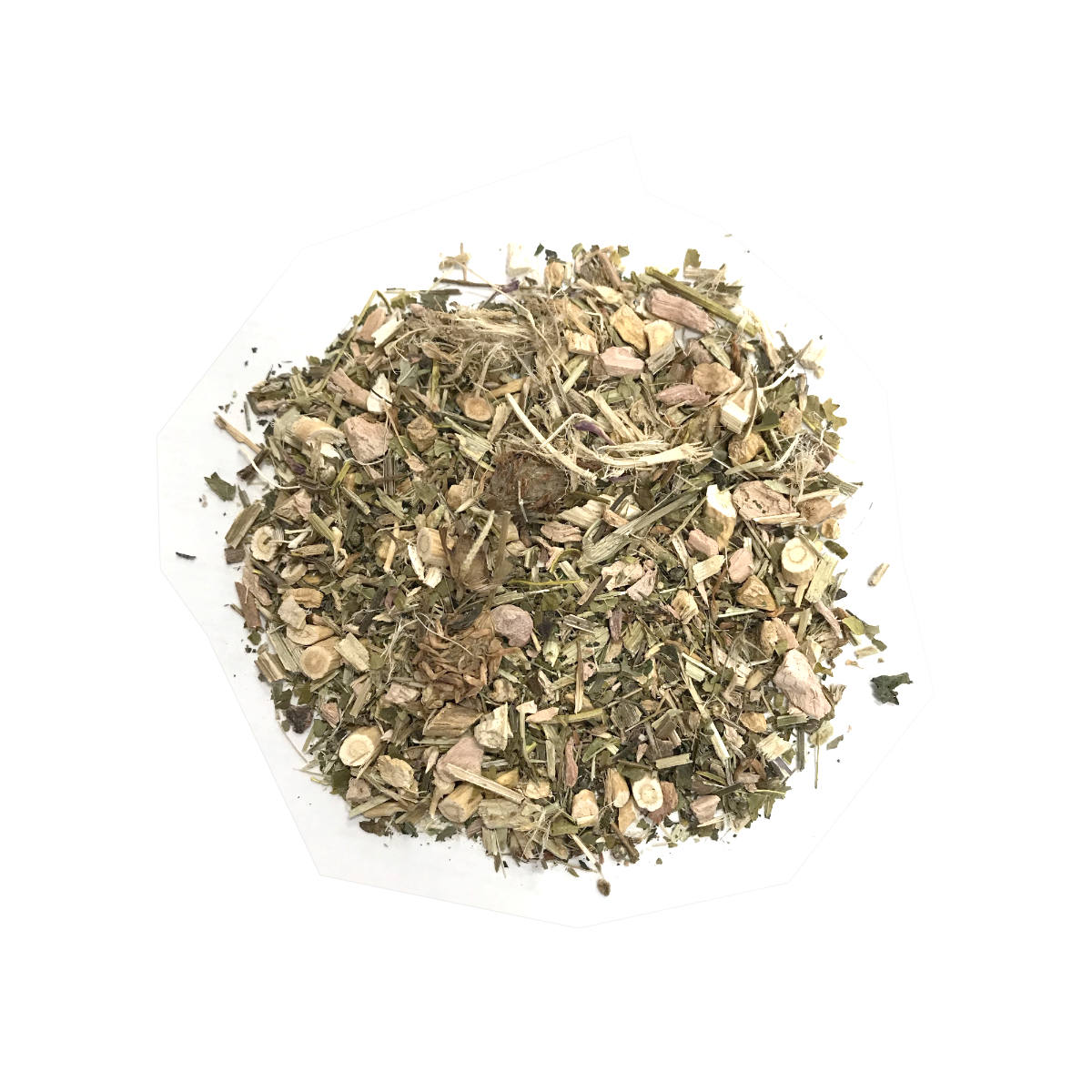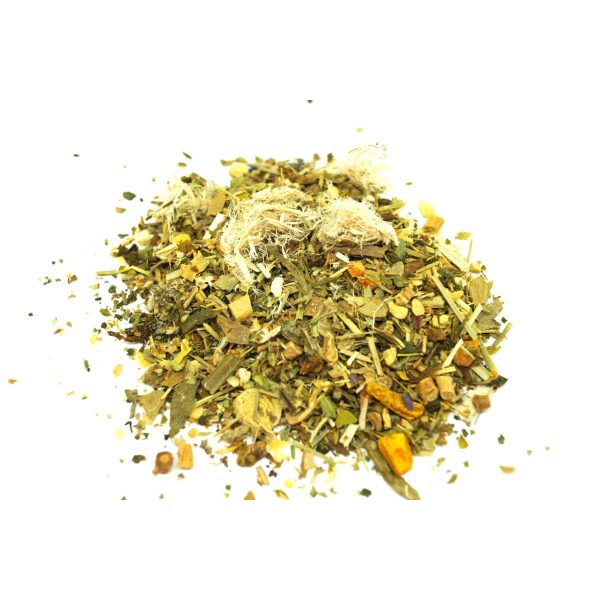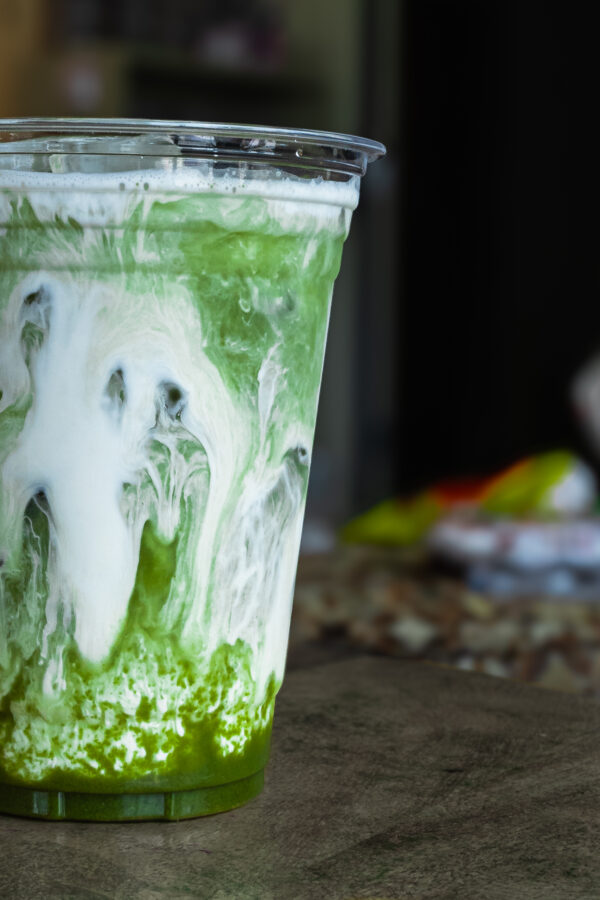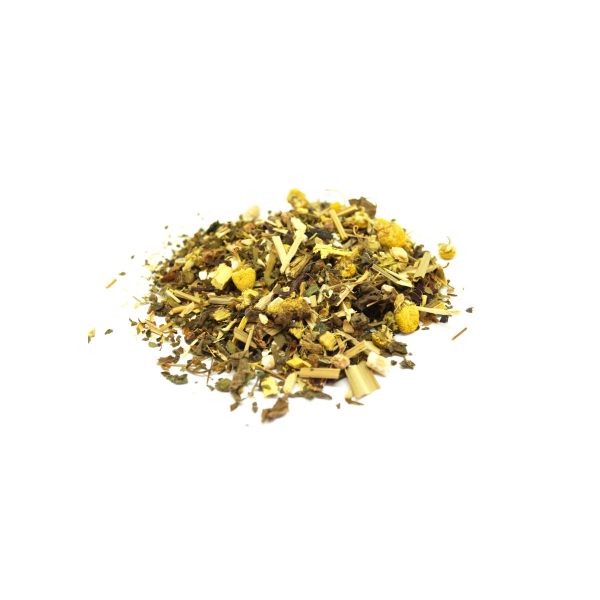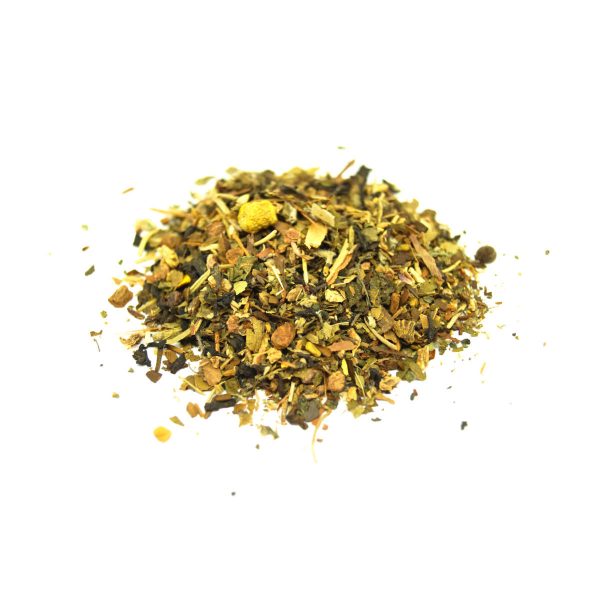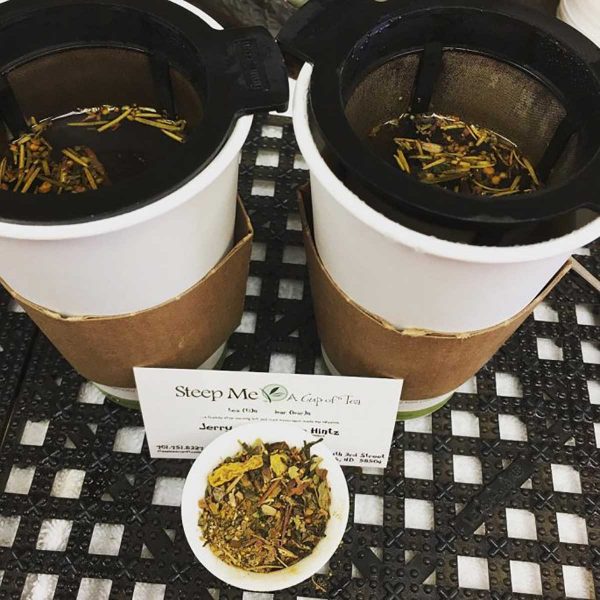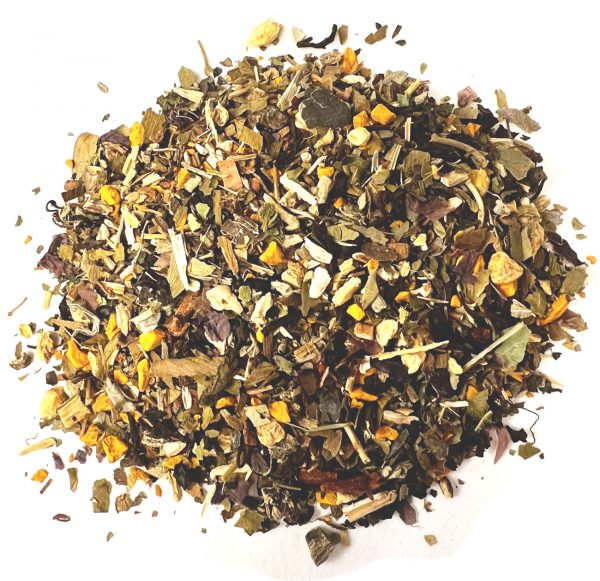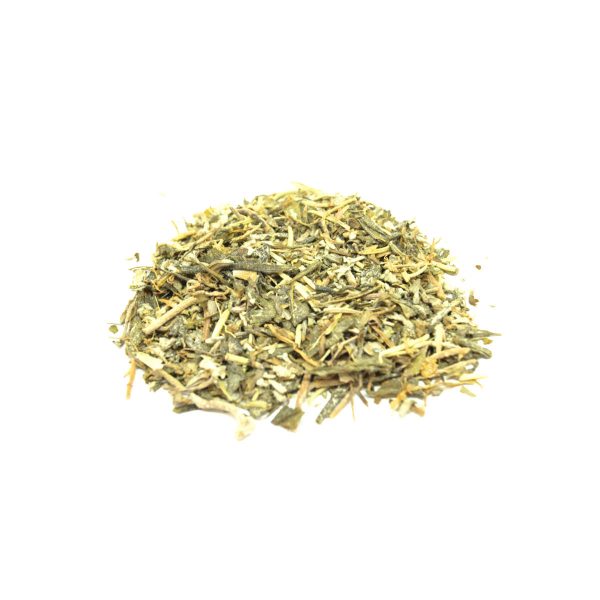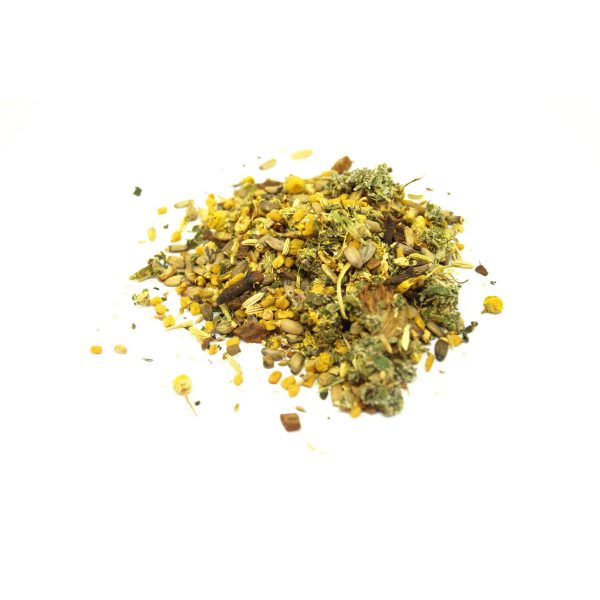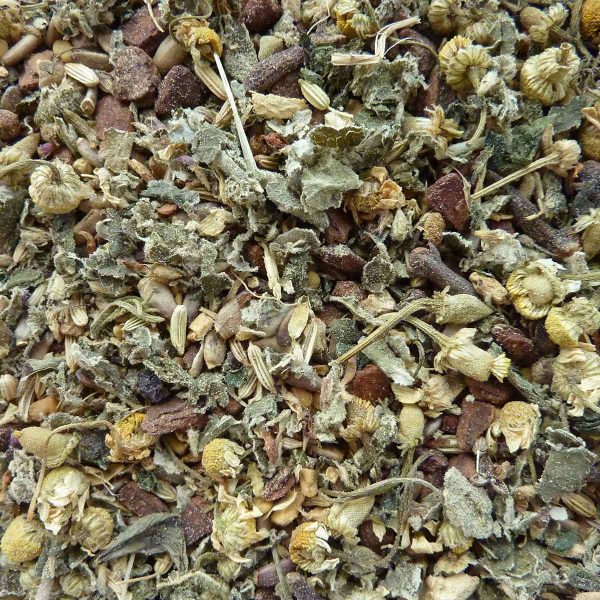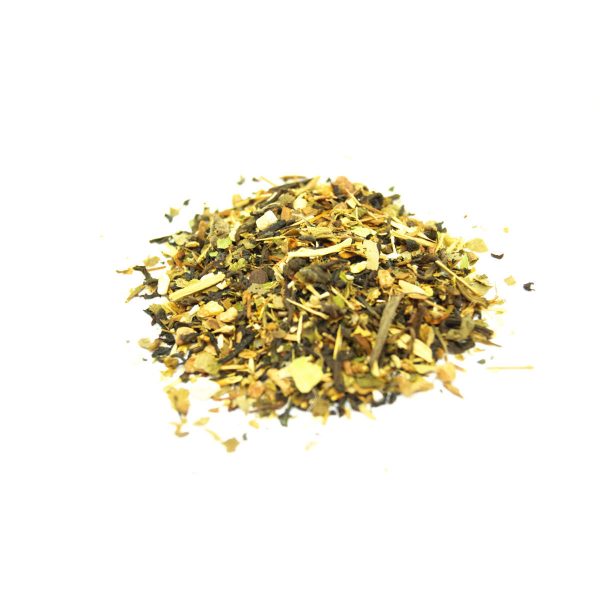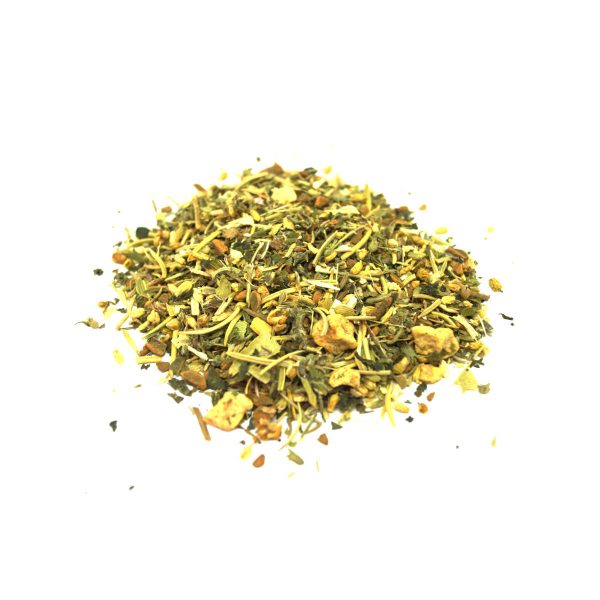With over 400 different kinds of loose tea that will exceed all tea lover’s expectations. You’re sure to find something you will love! All handcrafted by us in North Dakota.
Description
Blender’s Notes Lymphatic Cleanse:
Steep Me Self-Help combinations are a fantastic way to get health benefits outside of the standard tea leaf. This combination of herbs was built to help the body get rid of the toxins in the Lymphatic System. Your lymphatic system is a network of organs, vessels and tissues that work together to move a colorless, watery fluid (lymph) back into your circulatory system (your bloodstream). As a vital part of your immune system, your lymphatic system protects you from infection and destroys old or abnormal cells your body does not need. Lymphatic system functions also include maintaining normal fluid levels in your body and absorbing fats and fat-soluble vitamins so they can make their way into your bloodstream. Your lymphatic system has many functions. Its key functions include Collecting excess fluid from your body’s tissues and returning it to your bloodstream. This supports healthy fluid levels in your body. Your lymphatic system also filters out waste products and abnormal cells from this fluid. Helping your body absorb fats. Most nutrients can travel through tiny openings (pores) in the walls of your capillaries, and your body can then absorb and use them. But certain fats and other molecules are too large to travel in this way. Your lymphatic system collects fluid from your intestines that contain these molecules and transports it back to your bloodstream. Protecting your body against invaders. Your lymphatic system is part of your immune system. It produces and releases lymphocytes (a type of white blood cell) and other immune cells. These cells look for and destroy invaders — such as bacteria, viruses, parasites, and fungi — that may enter your body. Every day, about 20 liters of plasma (the liquid part of your blood) flow out of tiny pores in the thin walls of your capillaries. Imagine water seeping out of a sponge. Where does this liquid go? It delivers oxygen and nutrients to the tissues surrounding each capillary. The tissues hungrily soak up all the nutrients while leaving behind waste (like a kid who finishes their food but leaves behind a pile of sticky napkins). Plasma does not mind cleaning up the mess — it picks up the waste and then returns to your bloodstream the same way it came, by flowing back through the pores in your capillary walls. Each day, about 17 liters of plasma return to your bloodstream in this way. Since 20 liters initially flowed out of your capillary walls, that means 3 liters are still roaming around in your body’s tissues. That is where your lymphatic system steps in. Tiny lymphatic capillaries pick up the remaining fluid from your tissues. The fluid changed its name during its journey: now instead of plasma, it is called lymph. Your lymphatic capillaries move the lymph into larger tubes called lymphatic vessels. These vessels keep the lymph moving until it reaches one of two major ducts in your upper chest. These are called your right lymphatic duct and thoracic duct, and they are a bit like highway on-ramps. They merge into large veins called your subclavian veins and empty the lymph into them. From there, your lymph reenters your bloodstream and can flow through your body again.
The organs of the lymphatic system are your: Bone marrow. This is the soft, spongy tissue in the center of certain bones, like your hip bone, backbones, and breastbone. Your bone marrow has the vital job of making white blood cells, red blood cells and platelets. Thymus. This organ is in your upper chest beneath your breastbone, and it is most active before puberty. It is where T-cells (a type of white blood cell) fully mature. T-cells help your body fight off invaders. Lymph nodes. Lymph nodes are bean-shaped glands that monitor and cleanse lymph as it filters through them. They clear out damaged cells and cancer cells. Your lymph nodes also store lymphocytes and other immune system cells that attack and destroy harmful substances like bacteria. You have about 600 lymph nodes scattered throughout your body. Some are intricately connected in groups called chains. You may be able to feel some lymph nodes through your skin, in areas like your armpits, groin or neck. Others are deeper inside your body. Spleen. This largest lymphatic organ is located on your left side under your ribs and above your stomach. Your spleen filters your blood and removes cells that are old or not working properly. It also keeps red blood cells and platelets available in case your body needs them. Mucosa-associated lymphoid tissue (MALT). This mucus membrane exists throughout your body in many important locations. For example, it lines your tonsils, airways, small intestine, and appendix. MALT looks for and destroys germs that could harm you. Your lymphatic system is a big team. Other key players include your: Lymph. Lymph, also called lymphatic fluid, is a collection of extra fluids that drain from cells and tissues in your body and are not reabsorbed into your capillaries. Lymph contains many different substances, including proteins, minerals, fats, damaged cells, cancer cells and germs. Lymph also transports infection-fighting white blood cells (lymphocytes). Lymphatic vessels. Lymphatic vessels are tubes that form a complex network throughout your body. The smallest tubes are lymphatic capillaries, which connect to larger tubes that lead to two main ducts in your upper chest. The pulsing of nearby arteries and squeezing of nearby muscles help fluid move through your lymphatic vessels. These vessels contain one-way valves that keep lymph moving the right way. Collecting ducts. Two main ducts in your upper chest empty lymph into your subclavian veins. These are your right lymphatic duct and thoracic duct. These ducts are like highway on-ramps or merging points where lymph rejoins your bloodstream. Tonsils and adenoids. These structures trap pathogens from the food you eat and the air you take in. They are part of your body’s first line of defense against invaders. Your tonsils are in the back of your throat. Your adenoids are just behind your nasal cavity but are only active during childhood. Lymphatic System: Function, Conditions & Disorders (clevelandclinic.org)
Lymph congestion can affect your entire body. Symptoms of lymph congestion may include Fatigue~Stiffness-Muscle and joint pain~Bloating-Holding onto water~Breast swelling during your cycle~Itchy and dry skin~Brain fog~Headaches~Weight gain~Swollen glands~Cold hands and feet~Chronic sinusitis, colds, sore throats, or ear issues~Skin problems~Cellulite. In this blend we started with Cleavers. Cleavers have an affinity for the lymphatic system and help to move stagnation through the body. The lymphatic system is cleansed by using cleavers as it moves lymph and expels toxins. The draining and circulatory action of cleavers is particularly useful to breast tissue, where lymph can become stagnant over time and may lead to cysts. Meadowsweet was added because it contains compounds like salicylic acid, flavonoids, and tannins, which have anti-inflammatory properties that can help reduce swelling in the lymphatic system. The antioxidants in meadowsweet help protect cells from damage caused by free radicals, supporting overall health. Meadowsweet can promote lymphatic drainage, helping to remove toxins and waste from the body. Its pain-relieving properties can help alleviate discomfort associated with lymphatic congestion and inflammation. Meadowsweet can improve digestive health, which is important for overall lymphatic function. Next, we added Echinacea. Echinacea is typically thought of as an immune-boosting herb, but it also stimulates lymphatic flow and helps clear out congestion. In fact, this may be one of the reasons echinacea helps your body deal with infections- by promoting the movement of white blood cells. Echinacea is a lymphagogue, meaning it helps promote lymphatic drainage within the body2. This helps the body remove metabolic waste and toxins, which can improve overall health. By enhancing immune function, Echinacea helps the lymphatic system in clearing infections and reducing swelling. Echinacea’s anti-inflammatory properties can help reduce inflammation in the lymphatic system and other parts of the body. Its antimicrobial properties can help fight infections, supporting the lymphatic system in maintaining overall health. Ginger was added because it helps cleanse the lymphatic system by promoting lymphatic drainage, which helps remove toxins and waste from the body. Its immune-boosting properties can help the lymphatic system fight infections and maintain overall health. Ginger’s anti-inflammatory properties can reduce inflammation in the lymphatic system and other parts of the body. Ginger promotes better blood flow, which can enhance the effectiveness of lymphatic drainage. Ginger can help heal swollen lymph nodes and soothe the skin.
Along with the above ingredients we added Astralagus. Astragalus helps cleanse and heal infected lymph nodes by easing swelling and congestion. It is an adaptogenic herb, meaning it can remove free radicals and stressors, whether physical, chemical, or biological. It has been used in Chinese traditional medicine to treat swelling and boost the immune system. Goldenseal was included because it has lymph-stimulating properties of this herb making it important for improving the body’s natural lymphatic drainage. It promotes detoxification and cleansing of the lymphatic system. Goldenseal (Hydrastis canadensis) is primarily used as an anti-inflammatory; goldenseal also boosts the cleansing process of the lymphatic system. Red root (Ceanothus americanus) is a lymphatic-specific herb highly regarded for its effectiveness in reducing lymphatic congestion. It stimulates the lymphatic vessels, facilitating the flow of lymph throughout the body. By promoting lymphatic circulation, red root helps maintain a healthy lymph system and supports a robust immune response. We also added Manjistha. Manjistha helps improve the functioning of the lymphatic system, which is responsible for transporting fluids, providing nourishment, and eliminating waste and toxins from the body. It also helps to boost the immune system and protect the body from various infections. Next, we added Red Clover. Red clover helps in stimulating the lymphatic system, aiding in the removal of toxins and waste products from the blood through lymphatic stimulation. This action helps in improving the efficiency of fluid movement throughout the body, making it beneficial for chronic skin conditions like eczema, psoriasis, and acne. Finally, we added Wild Indigo. Wild Indigo Root, also known as Baptisia tinctoria, offers to help cleanse the lymphatic system by promoting lymphatic drainage, which aids in the removal of toxins and waste from the body. It can reduce glandular swelling, making it beneficial for conditions involving lymph node inflammation. By improving lymphatic function, Wild Indigo can boost the immune system and help the body fight infections. Wild Indigo has antimicrobial properties that can help rid the body of damaging microbes. Its gentle, non-invasive action makes it a popular choice for supporting lymphatic health, especially in those with compromised immune systems or chronic illnesses.
NOTE: “This/these claim(s) has/have not been evaluated by the Food and Drug Administration. This product is not intended to diagnose, treat, cure or prevent any disease.”
Features Lymphatic Cleanse:
- Leaves can be infused all day! (They will not get bitter)
- Lots of individual flavor based on the ingredients
- All Wildcrafted Herbs
- All Organic where Wildcrafted is not available
- Very Light ~ Smooth Taste
- Light Brown Colour Cup of Tea
- Full of natural antioxidants and Low in Tannins and Very Hydrating
- Sealed Tin ~ 9 oz will make 60 – 12oz teas
- Iced Tea ~ Always Double the amount of Tea for the same size cup!
- Recommend 2 tsp Per Day ~ 12oz Boiling Hot H2O ~ 15-minute steep ~ resteep leaves if you like
- Caffeine: None
Ingredients: Steep Me Proprietary Organic and Wildcrafted Blend of Cleavers, Meadowsweet, Echinacea, Ginger Root, Astralagus Root, Goldenseal, Red Root, Manjistha, Red Clover and Wild Indigo Root.
Not Safe for Pregnancy
Not Safe for Breastfeeding
Not Safe for Cancer Patients
NOTE: This/these claim(s) has/have not been evaluated by the Food and Drug Administration. The products offered by Steep Me Tea Apothecary -Franchisees – Wholesalers – Influencers or SteepMe.com are not intended to treat, cure, or prevent any illness or disease. If you have or suspect that you have a medical problem, consult with your physician for diagnosis or treatment. All gender specific blends are based on Gender Assigned at Birth. Use herbs as per instructions and always watch for any allergic reactions. You should always carefully read all product packaging and labels. Always consult your physician or health care provider before using any herbal products, especially if you have a medical problem. Steep Me Tea Apothecary and SteepMe.com and/or its proprietors assume no liability for any injury, illness or adverse effects caused by the misuse and/or use of the information or products presented
NOTE: When using Teas, Capsules, Tinctures and Micro-Nutrition to help with your ailment ~ please remember this is a marathon ~ we recommend an investment of time of at least 6 months to see positive change. Any gender specific blends are based on gender assigned at birth.
Additional information
| Weight | 12 oz |
|---|---|
| Size |
Benefits
When talking about the many types of tea, Tisane (Herbal Infusion) or Herbal Tea or Self-Help Tea is really not tea at all. It is made like a tea and all the same items are used to make it, but it does not contain the Camellia Sinensis Plant (unless stated), but is simply roots, flowers, leaves, and fruits put together is a combination that is made just like a tea. With that being said…the health benefits of a Tisane or Herbal teas are different. They can vary depending on the ingredients and combination of herbs so there are no blanket health benefits – just depends on the ingredients. For many, the best part of Tisane or Herbal Tea or Self-Help Tea is the fact that it is caffeine free naturally. Of course there are herbs that can be added to change that. The most popular Herbal teas include Chamomile, Peppermint, Spearmint, and any combination of fruit blends or infusions. Our Self-Help Teas are simply supplemental herbal combinations to aid with an occasional ailment specific to what may be happening in your life. The teas are built to work and are not build with any specific flavorings. The blends are tested to the minimum requirements laid out by Steep Me A Cup of Tea. The taste provided is natural to the herbs present in the blend. No flavorings added. This/these claim(s) has/have not been evaluated by the Food and Drug Administration. The products offered by Steep Me Tea Apothecary -Franchisees – Wholesalers – Influencers or SteepMe.com are not intended to treat, cure, or prevent any illness or disease. If you have or suspect that you have a medical problem, consult with your physician for diagnosis or treatment. Use herbs as per instructions and always watch for any allergic reactions. You should always carefully read all product packaging and labels. Always consult your physician or health care provider before using any herbal products, especially if you have a medical problem. Steep Me Tea Apothecary and SteepMe.com and/or its proprietors assume no liability for any injury, illness or adverse effects caused by the misuse and/or use of the information or products presented.
Tisane or Herbal Tea or Self-Help Tea
Related products
Adrenal Insufficiency ~ Fatigue
From: $20.00
This is a great self-help tea for Adrenal Insufficiency and Fatigue...these hand-crafted herbs combine to allow your adrenal system to restore and repair for better recovery and reduced stress.
Select options
This product has multiple variants. The options may be chosen on the product page
Candida
From: $16.00
This combination has all the herbs proven to help get rid of the build-up of yeast in your digestive system. We recommend you add it to another tea of your choice to make is more palatable.
Select options
This product has multiple variants. The options may be chosen on the product page
Hitch ~ Women’s Tea
From: $16.00
A great overall women's health tea - use on a daily basis to maintain health benefits. Not meant for women below the age of 27. This women's tea is a great hormone balancing tea with great response from the users on reduced inflammation and reduced anxiety. A great sweet taste...give it a try today!
Select options
This product has multiple variants. The options may be chosen on the product page
Hypothyroidism
From: $14.00
Select options
This product has multiple variants. The options may be chosen on the product page
Mental Sharpness and Clarity
From: $14.00
Looking for a great tea to help keep you focused and on task...this is the blend...plus we do not use caffeine to do it!
Select options
This product has multiple variants. The options may be chosen on the product page
Milk In It ~ Breastfeeding Tea
From: $12.00
A fantastic herbal blend with chai spices and the addition of fennel and fenugreek to help enhance milk production. We have seen huge success rates with this blend.
Select options
This product has multiple variants. The options may be chosen on the product page
Swamp – Men’s Tea
From: $17.00
Select options
This product has multiple variants. The options may be chosen on the product page
Tummy Tamer
From: $12.00
Looking for a great option for the occasional tummy ache! A great tea with ginger and peppermint to help with a sour tummy! Pregnancy Safe!!
Select options
This product has multiple variants. The options may be chosen on the product page

